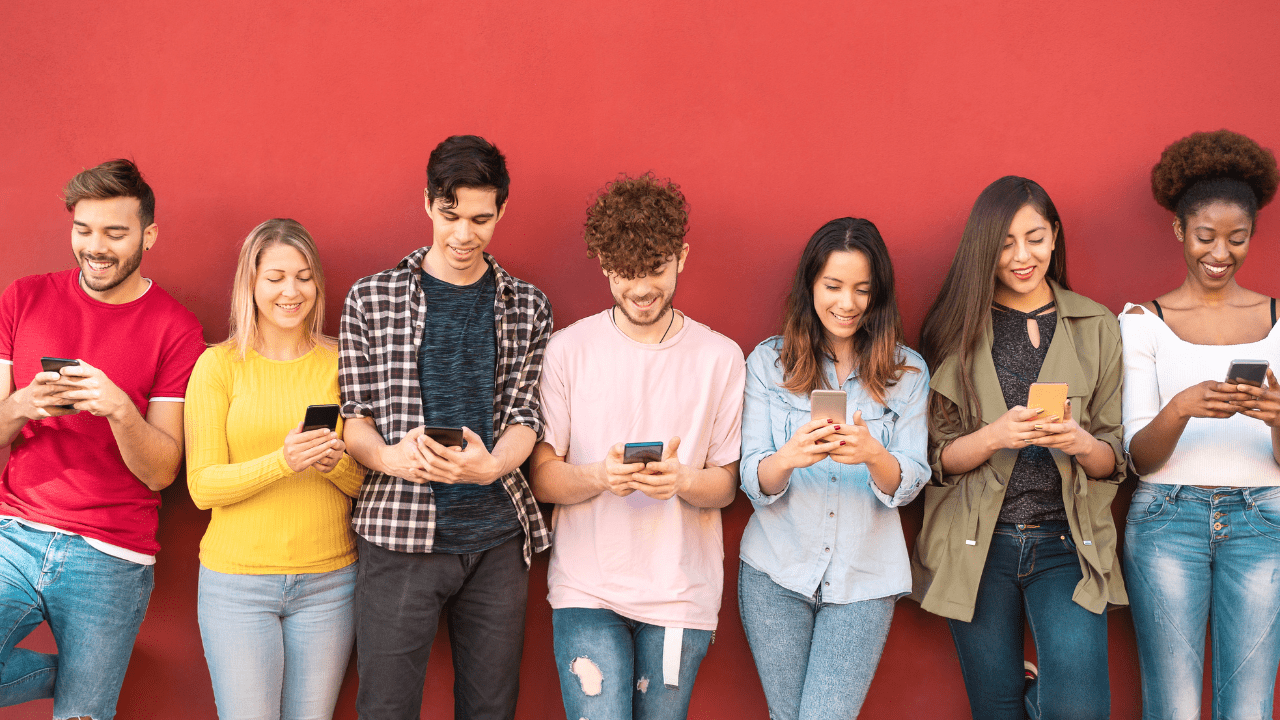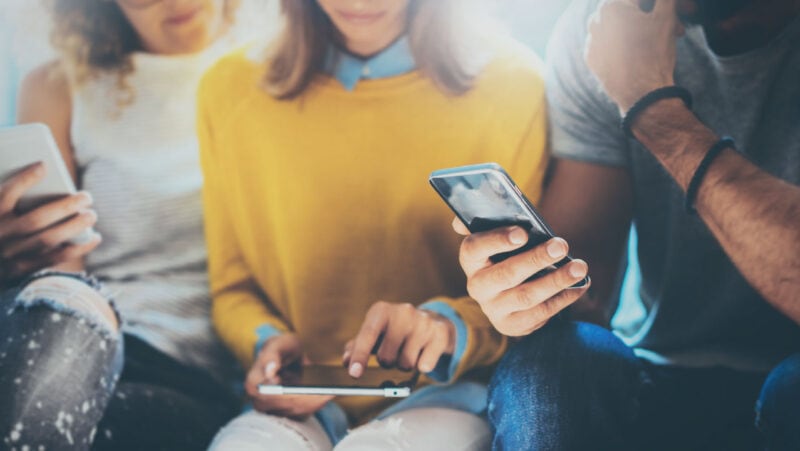
5 ways to curb a smartphone addiction
Our brains are turning to these little gadgets to receive their dopamine fix, but it doesn't have to be that way. By James Adams
Smartphones. Those clever little gadgets sitting in your pocket, next to your bed, perched at the dinner table like a member of the family. They even find their way into the bathroom. Smartphones are a technological innovation that the whole world has collectively embraced. They provide connectivity, convenience and an opportunity to pass the time when there’s nothing else to do.
I can guarantee that most readers will have this page loaded up from their phones.
There’s no denying that smartphones have their benefits. But – and this is a big but – have we developed a gradual, yet noticeable addiction to them?
Think about it for a moment. If someone was to take away your phone for an entire day, would you be ok with it? Even just thinking about that might induce feelings of uneasiness.
Sadly, our phones are designed to maintain our attention and have been successful in doing so. Application developers are competing for your time and will go to incredible lengths to develop an application that will keep you scrolling as long as possible. Your time is their money. Unfortunately, little consideration is given to how brain chemistry is changed in the process.
I don’t claim to understand the complete science of brain chemistry but I am familiar with one particular neurotransmitter – dopamine. Dopamine, otherwise known as the 'feel good' chemical provides pleasure, satisfaction and motivation when released.
Smartphone applications are designed to maximize the release of dopamine in the brain. Some elementary science of how humans react to visual imagery and sound makes it surprisingly easy to create an application that continues to release dopamine – over and over again. Dopamine makes us feel incredibly good. It’s no surprise that we seek more of it. In most cases, the reaction is completely involuntary and part of our instinctive nature as humans.
So what’s the harm in releasing dopamine over and over again? To answer this question, we need to examine what the intended role of dopamine is. Dopamine is believed to be released at the very moment we are expecting a reward. Humans are programmed to expect a reward after doing something 'good'.
From an evolutionary standpoint, 'good' was characterized as any action that the brain determined as being beneficial for its survival and evolution. Dopamine was likely an evolutionary trait that helped early humans pass on their genes.
Fast forward to modern days, we are not required to call upon these survival instincts all too often - yet dopamine is still released when the anticipation of a reward grows.
In our modern-day society, rewards are not always aligned with 'good' behaviour that encourages evolution and growth. We determine our own reward system. We may choose to reward a child with chocolate for behaving themselves, or a student for completing their homework on time. And in some cases, criminal behaviour is rewarded.
We can choose how we reward one another – including ourselves. We can even choose to reward customer loyalty by giving them a smartphone experience that keeps them excited and engaged.
So going back to the original question - what is the harm in releasing dopamine over and over again?
If you completely immerse yourself in an experience that is continuously exciting and thrilling, are you going to want to leave it? Is it easy to establish boundaries and know when to stop? In many instances, the clever and intricate designs of smartphone apps make it difficult to, hence the sudden surge in smartphone dependence across the globe.
It’s very difficult to walk onto public transport without seeing someone captivated in their own smartphone world. I even came across a teenager walking up a flight of stairs while scrolling away – completely oblivious to their surroundings.

Re-programming the brain without realising
Besides the damage it does to our eyes, brain chemistry is adjusted in the process. The brain is very intelligent. Dopamine releases a memory trail that tells the brain to remember a good experience. Therefore, when the brain needs a nice pick me up, it turns to its dopamine trails and selects something that it believes will provide a large dopamine surge. Smartphones form deeper dopamine trails (otherwise known as supernormal stimuli) due to the artificial nature in which they are generated. The natural world cannot replicate this.
Have you ever been sat doing nothing and felt a sudden urge to check Facebook? Or felt the need to open an app? Yep – that’s your brain pulling on a previous dopamine trail and pleading with you to repeat it. It’s a craving, no different to other cravings such as chocolate and fast food.
Suddenly the brain is full of these deep dopamine trails that originate from your smartphone.
There’s the problem right there. Our brains are turning to these little gadgets to receive their dopamine fix. Our phones are now hijacking our precious time.
Day-to-day hobbies and responsibilities such as work, cleaning, cooking and exercise are never going to release the same levels of dopamine as an artificially engineered application. Consequently, we won’t be motivated to do any of them in place of a smartphone experience. After all, our smartphones are far more exciting.
We become less productive, less motivated, and less integrated in society. Real-life conversations are suddenly dull compared to our applications.
Our brain chemistry has been subtly and gradually changed by people who want to make money from our time.
But fear not, there is a way to break this habit and regain control of your time. The very first step is acknowledgement. Read on for some tips that I’ve adopted as part of my detoxification program.
5 tips for curbing a smartphone addiction
If you are still reading, chances are you want to know what can be done to break an addiction to your phone. It’s not an easy process and there will be back-and-forth swings between moderation and dependence. I lived with a smartphone addiction. There are still times when the temptation suddenly arises out of nowhere.
It’s OK to fall flat on your face. The key is getting back up again. There will come a time when you won’t fall anymore. Your smartphone addiction will no longer be a thing. The dopamine trails will have been erased for good.
Here are 5 tips that have helped me to break my smartphone addiction.
Greyscale Mode
Colour is one of the main culprits for messing with your brain chemistry. Colour encourages more dopamine to be released. There is an accessibility feature on every smartphone that allows you to put your screen in greyscale mode. It may feel strange at first but try to stick with it. Removing the colour from your screen will reduce the dopamine released from your phone, therefore you will be less likely to develop a dependence on it.
Application Layout
How our applications are presented on the screen can induce temptation. Certain apps are more addictive than others. Identify your most addictive apps and place them on a screen that is not immediately visible when you unlock your phone. Or take it a step further and delete them, if you are feeling brave enough.
Disable notifications
Besides providing gentle reminders, smartphone notifications are designed to achieve something else that is rarely spoken about. Notifications activate our dopamine trails. They remind the brain that 'Application A' is fun and exciting and therefore you should return to it, right now. Disable notifications and the temptation will gradually subside.
Be very careful with video streaming
Video streaming platforms can provide some of the most powerful dopamine trails. Millions of visual experiences at the click of the bottom. The brain is completely spoilt for choice. Once a video has been streamed, you’ll be presented with a new list of recommendations, based on historical viewing patterns. It’s not difficult to see how this continuous stream of content creates an addictive dopamine loop that is incredibly difficult to escape from.
I would say video streaming addictions are the hardest to overcome. But stick with it. Maybe tip 5 will help.
Moderate your time
Then comes the final tip: moderation. Cutting smartphones out of our lives completely would be counterproductive. Virtually disconnecting ourselves from society would be counterproductive. But moderation could be the way to strike a balance between indulgence and overindulgence.
Set yourself time limits, have no phone zones in the house, perhaps set a streaming freeze for 1 hour before bedtime. How can you moderate the time spent on your smartphone? Think about it and don’t be afraid to get creative.
By staying in control of your phone usage and keeping it within a set of pre-defined boundaries, you send out a very clear message to your brain – “I’m in charge!” Your brain will begin to realise that its smartphone dopamine trails are no longer effective, and will turn to more natural experiences to feel fulfilled. Maybe you’ll start learning to play that musical instrument that’s been gathering dust, or train for that marathon you’ve been putting off for years. Don’t be surprised if old skills and hobbies resurface again.
There is a concept within Eastern religions and cultures known as Brahmacharya. Despite a widely adopted (and possibly erroneous) western perspective that Brahmacharya means only to be celibate, its definition expands much wider and does not need to include celibacy for ordinary lay people. Brahmacharya is the complete devotion to aligning with the true self by moderating the human senses. Sensory experiences are believed to keep us trapped within the bounds of Maya (illusion and ignorance) if we become attached to them. It is believed that one who practices Brahmacharya masters the self and transmutes sensory habits to attain inner peace.
Cutting out your smartphone addiction could inadvertently turn you into a Brahmachari – the complete master of self.








